With fluctuating call volumes and staff levels, maintaining high performance in the contact centre is difficult. Here are some top tips to do so.
1. Guard Against Attrition
The contact centre is often associated with high attrition rates, meaning that while the team may be functioning perfectly well for now, valuable members may leave at any time.
Remember, long-term workers have different priorities to new recruits, as RED Recruitment report that advisors who have been in their role for less than six months label the following as their three greatest priorities:
- Nice working environment
- Salary
- Company culture
However, advisors who have been in their position for longer than six months have a different focus and priorities. Their top three priorities are highlighted below:
- Salary
- Progression
- Nice working environment
So it can be important to have a plan in place to guard against attrition which recognises these priorities. For example, when incentives are introduced to increase advisor engagement, these priorities can be referred to, so that the contact centre can get the most out of the rewards it presents.
Other tactics to guard against attrition include: planning internal attrition interviews, introducing shift swaps and refining the recruitment process.
To find out more about these tactics and to learn more, read our article: Top 20 Ways to Reduce Attrition in Your Contact Centre
2. Avoid Multitasking
In many professions, including some of those in the contact centre, there has been a notion that if you’re unable to multitask, you’ll be unable to make progress. And yet, multitasking is now under quite proper observation and criticism for its impact on us.

Martin Hill-Wilson
Martin Hill-Wilson, Founder of Brainfood Extra, says that: “If you think about the customer experience, do you need to keep all of your attention to keep laser focus? To my mind, you need to devote all of that attention to understanding what somebody else is saying.
“In the contact centre, there will always be a team leader talking to you in your ear, or somebody distracting you next door, and there is always a lot of visual activity to be witnessed within the environment. So, how much are we really listening to what the customer actually wants? Particularly if that call sounds exactly like the five or six before.”
This may be one of the reasons why some customers don’t feel very well listened to in that environment. And here is some of the evidence:
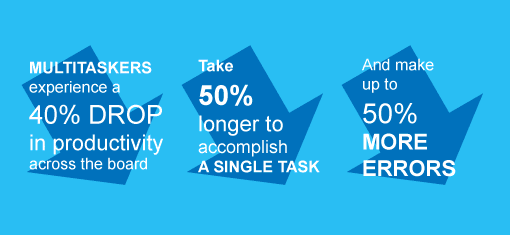
Martin concludes by adding that multitasking “is not dissimilar to over-revving an engine. Our instinct is to multitask, but the evidence is that it is not the smartest thing to do.”
3. Continue to Motivate Advisors by Demonstrating Leadership
Leading from the front is important in any contact centre. It’s about what you do and what you demonstrate throughout the day. To be a good leader who continually motivates your advisors, Ian Morton, Director at Pivotal Contact, recommends:
Listening Carefully – This is about both the said and the unsaid; make sure you listen, hear and see what’s going on around you. Look at body language, look at how the team are interacting. Who is talking to you who didn’t before? Who is not talking to you who was talking to you before? Try and ‘read the minds’ of advisors – it’s something that you have to do. Walk the floor and talk to people!
Being Responsible – As a leader, you are going to be responsible for ensuring that business values and the customer experience qualities are maintained, so your advisors look to you for support and guidance. Any leader is responsible for ensuring their team is effective. If the team’s not effective, the leader’s not effective.
Being Compassionate – You can be very ethical about certain things, but if you haven’t got compassion aligned with it, you are not going to get very far. Don’t look at a job only in an intellectually driven way, look at it from how your team will need to react to the customer. Do advisors have the right tools? Do advisors have the right processes? Do advisors have the right skills and competencies? And can they deliver the desired standard of service on an emotional level?
Being Socially Available – Mix with the team, and maybe even go out with them, if you’re invited. Just do something! Get to know your team and make sure they know that you are human and approachable.
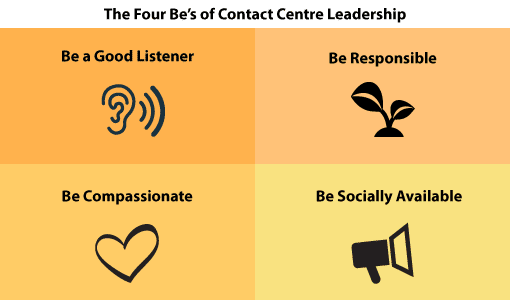
For more on this topic, check out our advice for how to: Train Team Leaders Well
4. Rethink How You Deal with Absence
To maintain high performance, it is important for the contact centre to have a strong core of advisors who have high attendance rates.
According to Ian Morton, the contact centre should “make sure the team is clear about what they are there to do and how they do it, because uncertainty is one the thing will drive advisors away.”
So, Ian advises “getting all the team involved in developing the business, so they feel there’s a purpose to come into work.”
Also, “do something for the internal or external community that’s fun but also bonds a team. It comes back to not being just all about work; it’s about having a purpose while doing something good for community as well.”
Other tips for reducing absenteeism in the contact centre include showing advisors how their absence affects the business, managing annual hours in hours not days and running return-to-work interviews.
For more on these pieces of advice, and to find others, read our article: 46 Tips for Managing Absence
5. Consider How Measures Are Driving Behaviours
Ian Morton considers it imperative that the contact centre makes sure it is “measuring the right things. Don’t choose easy measures or the ones that the management team can safely latch onto.”
Just because a certain metric score remains steady, it doesn’t mean that the overall quality of customer service remains high.
Ian uses the example of when Average Handling Time (AHT) is used as a target metric, saying: “advisors will be thinking about how long they are talking to the customer and how they can cut the conversation down. This can negatively impact upon customer service.
“That is the reason why AHT is so popular, because everybody – from the MD down to an accountant – can understand it. But they don’t have to deliver the service to the customer, the contact centre does.”
So, to reach and maintain high performance in the contact centre, Ian recommends “being open with the team and working with them to define the best measures.
“Get them involved in that definition process, because they will say what won’t work and what will work, in terms of benefiting the customer. If advisors own it, they will deliver it much better.”
Having made this point, it is vital to always keep the customer in mind, so it’s important to keep a healthy balance.
For more on the debate on AHT, read our article: Is Reducing Average Handling Time a Good Idea?
6. Get Management Buy-In
Align customer language to the business and provide simple reporting to showcase your good performance to management.
If the contact centre is trying to maintain high performance, let management know what a fantastic job it is doing and tell them about the hurdles that are preventing it getting even better, as well as the obstacles that the contact centre may face in the future.

Ian Morton
As Ian Morton says: “Create clear ownership across the business. Go to marketing, sales, distribution or whatever area is creating the calls coming through a door. Sit down with the business owner and make sure they understand what impact excess demands and volumes have on the customer.
“Then, with this in mind, work with the business owner to work out a clear strategy and priority for handling each demand type and channel.”
By doing this, the contact centre may also be able to gain more support for future business cases, as long as they align with the strategies discussed.
For more on building a business case, read our article: 11 Ways to Secure More Budget for Your Contact Centre
7. Keep Resource Planning in Mind
Resource planners are critical to the effectiveness of the operation, so it’s important that they have a good understanding of the contact centre, to maintain high performance.
One way of doing this is to get resource planners involved in the recruitment process.
This is according to Ian Morton, who asks us to “make sure that everyone in the contact centre understands the role of resource planning and to get resource planners to sit and work with the team. Ask the resource planning team to go through the training, sit and take calls.
“It is important for the efficiency of the contact centre that resource planners appreciate the job that advisors do. And, conversely, it is good for advisors to hear about the challenge that absenteeism, shift-swapping and changes in contact volumes bring to the resource planners.”
It can also be important for resource planners to be skilled at intraday management, so that fluctuating contact volumes don’t have a negative impact on performance.
For such scenarios, it is a good idea to have Standard Operating Procedures (SOPs) in place. These are a set of guidelines that dictate what should be done when contact volumes are much higher than expected. Conversely, these should also note the duties that should be fulfilled when contact volumes are lower than expected.
To find out more on this subject, read our article: 12 Top Tips for Intraday Management in the Contact Centre
8. Find Ways to Add More Variety to the Advisor Role
As the role of an advisor can be quite repetitive, certain members of the contact centre may lose enthusiasm for the role, hindering performance over time.

Mike Murphy
Mike Murphy from Genesys encourages contact centres to do more to mix up the role, stating: “Work that has variety for advisors is more engaging.
“If we are asking advisors to do the same call, after a call, after a call… or email, after email, after email… things get mundane and repetitive. This will be reflected in their voice, language and behaviour. So, the answer here is to multi-skill advisors and then blend your systems.”
Work that has variety for advisors is more engaging.
Mike Murphy
As an alternative to blending systems, the contact centre could schedule advisors to do one task for a certain amount of time before moving on to handle contacts on a different channel.
Follow the link to find out: How to Introduce Multi-Skilling into the Contact Centre
9. Calculate an Employee Net Promoter Score (ENPS)
To maintain high performance, it is also important to maintain a happy workforce. But how do you know if contact centre advisors are happy, engaged and enthusiastic?
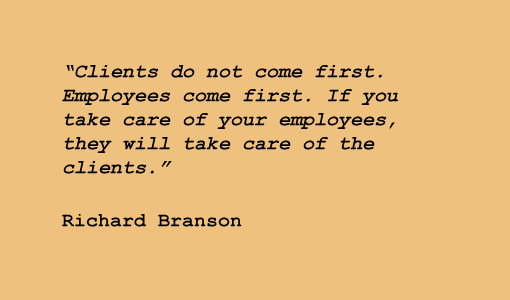
Unfortunately, many contact centres play a guessing game when it comes team morale. However, there are a few contact centres that have introduced an Employee Net Promoter Score (ENPS) to highlight when morale drops, so that they can introduce new measures to maintain advisor motivation.
When we visited PhotoBox’s contact centre in London, we discovered that they too implemented an ENPS, which they handed out on a quarterly basis, with a comments box included. This allowed advisors to offer specific pieces of feedback, as well as suggestions for how the contact centre could improve their work environment.
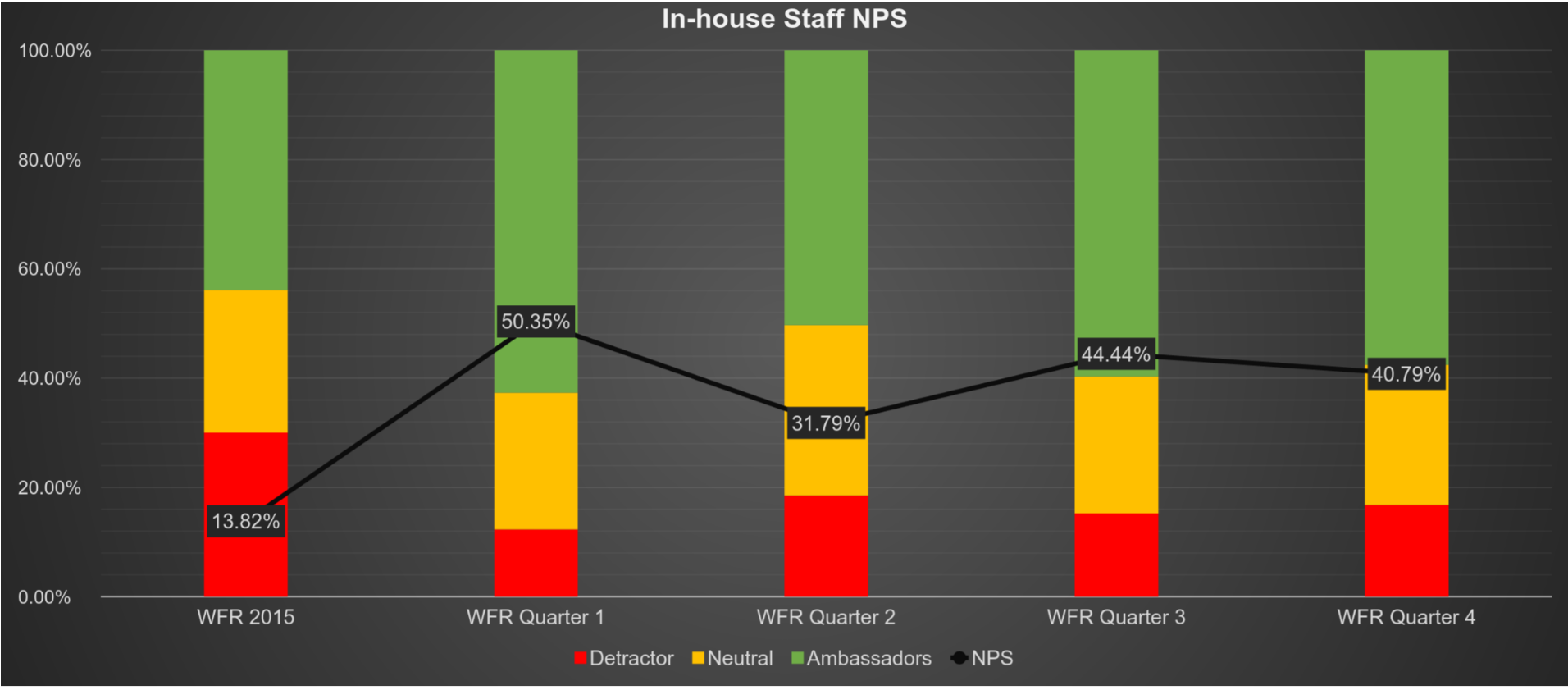
The graph above shows how PhotoBox’s internal NPS survey has progressed since it was launched in 2015.
For more on this subject, read our article: How to Calculate an Employee NPS
10. Regularly Test and Track Different Customer Journeys
Many contact centre managers will consider their contact centre performance to be high, without testing it out for themselves.
In fact, just last year we ran a poll in which it was discovered that 38% of industry professionals have NEVER called their own contact centre.
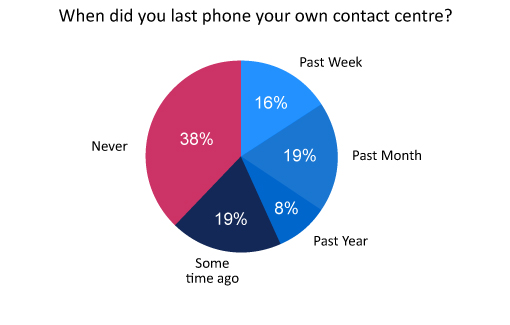
(This poll was sourced from the survey: 38% of Industry Professionals Have NEVER Called Their Own Contact Centre)
Without regularly testing and tracking, the contact centre can never be sure that its performance standards are being met.
When we visited AO’s contact centre in Bolton, we discovered that AO avoid this danger by following a different customer journey every week, in order to refine each process and make sure that the overall journey runs as smoothly as possible.
This is a good way of continually ensuring first-hand that contact centre performance is not dropping while updating procedures.
For guidance on plotting customer journeys, read our article: 5 Steps to Creating a Customer Journey Map
Do you have any other advice on keeping the contact centre focused?
Please share your thoughts in an email to Call Centre Helper.
Author: Robyn Coppell
Published On: 6th Nov 2017 - Last modified: 18th Mar 2024
Read more about - Hints and Tips, Agent Performance, Attrition, Editor's Picks, Martin Hill-Wilson, Motivation, Performance Management




















Actually this a good topics show it here, but I would like to add something very important the team leaders should be learn how to give the information to contact center and their arrives it smoothly and take training in this,and showing this to agents